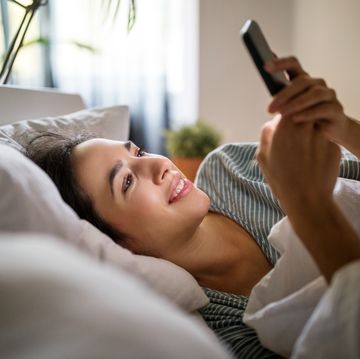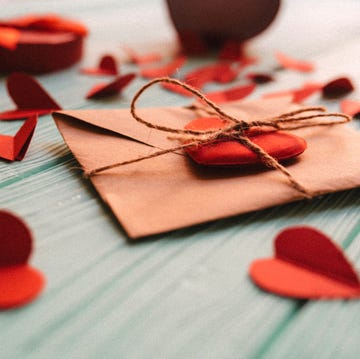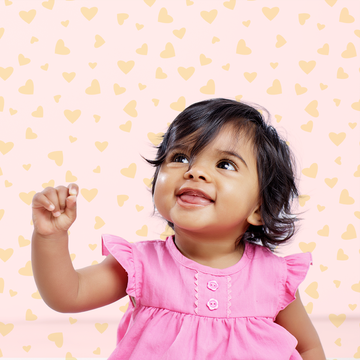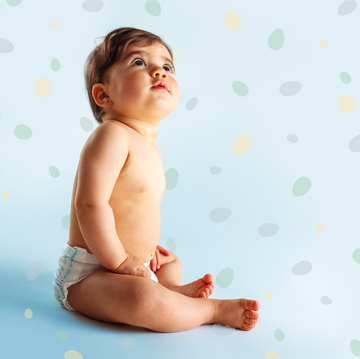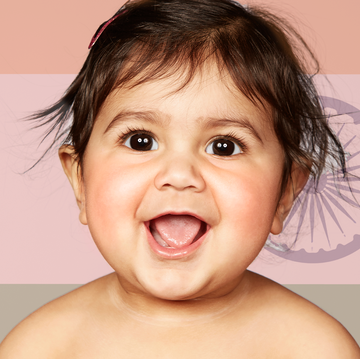Shop Small is a monthly series highlighting small business owners from diverse backgrounds. This series aims to go deeper than your typical product roundup, diving into the inspirational stories behind some of our favorite brands. By taking a behind-the-scenes look at how their shops came to be and highlighting the products they (and their shoppers!) love, we hope to put a deserving spotlight on these marginalized business owners.
Karen Young's love of body care started at an early age. The Brooklyn-born and Guyana-raised Oui the People founder credits everything she knows to her Caribbean family; they use body care as a way to show love to one another. Some of Young's fondest early memories are of her grandmother slathering fresh coconut oil-infused concoctions on her body and hair and watching her uncles shave, which would later become a pillar for her brand.
After learning more about branding and getting a birds-eye view of the breadth of products available during her career in the design and beauty industries, Young set out to launch a razor that empowers women. "I landed on the 'Oui' because I felt like beauty was always telling you no and all the things you weren’t doing right," Young says. "I wanted something that always said 'yes' to people, 'yes' to bodies."
From navigating career transitions to creating sustainable products, we spoke with Young about her journey building and evolving her company, Oui the People.
What inspired your transition from the design industry to body care?
I was working for Italian design houses, like Dolce & Gabbana and Roberto Cavalli, at the time. And even later, as I moved into more contemporary wear such as the Japanese streetwear brand Evisu, I developed a love of form and function, good tailoring and how to bring all of these luxury elements to whatever someone is going to experience. And then I started my own company in the interior design space.
When I decided to close that company, an opportunity for Estée Lauder came along. I took that job and landed in packaging. Things started to tie together in terms of what the ultimate experience was for a consumer on the other end and how you could pull something beautiful together. Launching the razor was the accumulation of all of those pieces.
As your signature product, what went into the design process to bring the razor to life?
For two years, I spent time getting to know who the audience for this razor might be. Customers were from such diverse cultures and had coarse hair and sensitive skin. I found this really dynamic and a great emotional audience on the other end of what I thought was a simple product.
I had a couple of options on a simple website, and I tracked what people were buying. I went back out to those consumers, talked with them and started getting feedback. What I pulled from all of that data was that in order to shave more body space, we needed a longer handle than what was available. I then worked with our manufacturer to create the razor and exposure on the head that allows you to shave anywhere on the body, particularly sensitive areas like bikini lines and underarms.
What sparked the company's expansion into body care?
What I discovered over time and after obsessing over body care — starting with the razor — was that I was having such an inflammatory response to shaving largely because I had a compromised skin barrier. I experience eczema and that sort of thing, and it’s more likely that abrasive experiences would leave an inflammatory response, like rashes and ingrown hairs. I wanted to build the products around that.
Your brand is rooted in nourishing people's bodies instead of emphasizing anti-aging. Why was it important to embed this ethos into your brand?
Marketing is powerful. I wasn’t allowed to have magazines growing up, and my mom didn't purchase beauty magazines. We had National Geographic and the Bible. I knew a lot of words, but as I became an adult and looked back, it was a very strong and bold decision.
That said, I really wanted to think about how we would speak to not only an audience of the older people who are largely the consumers of our product, but their daughters and granddaughters, as well. I fundamentally wanted to change the entire way beauty was marketed to women.
How do you infuse sustainability at the core of your brand?
Sustainability is largely rooted in my own cultural upbringing. We reused many things and turned nature into the things we brought inside. It was part of our homes and the tools we use — wood and all of that. It was baseline inspiration to me.
What pain points did you experience when building your business?
I worked full-time at Estée Lauder as I was building the business, and it got to a point when the tension between what I was doing and what I wanted to do were too great. I told myself: I can break free and take that leap into becoming a full-time CEO and founder of the brand.
I had to be very scrappy about how I built the business and thought about capital. Retailers were knocking from day one, and we didn’t launch into retail until last year. It was so important to me to build and execute on what would land the same way to the consumer if we launched into retail.
What are you most excited about for the future of Oui the People?
My goal and vision is that women everywhere can see themselves in the brand. I want them to understand that the products they’re using were always rooted in something that would truly care for them along the way.
Nashia Baker is a commerce editor at Hearst Magazines; she covers all things home and lifestyle across brands such as Oprah Daily, Cosmopolitan, Delish, and Esquire. Before joining Hearst, she highlighted small business owners, creatives, and the best shoppable content.











